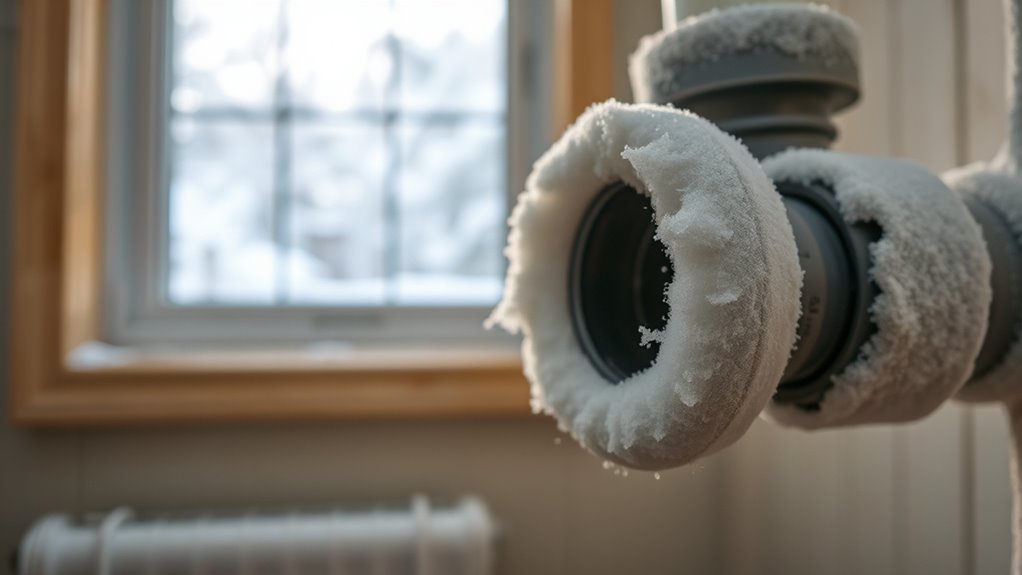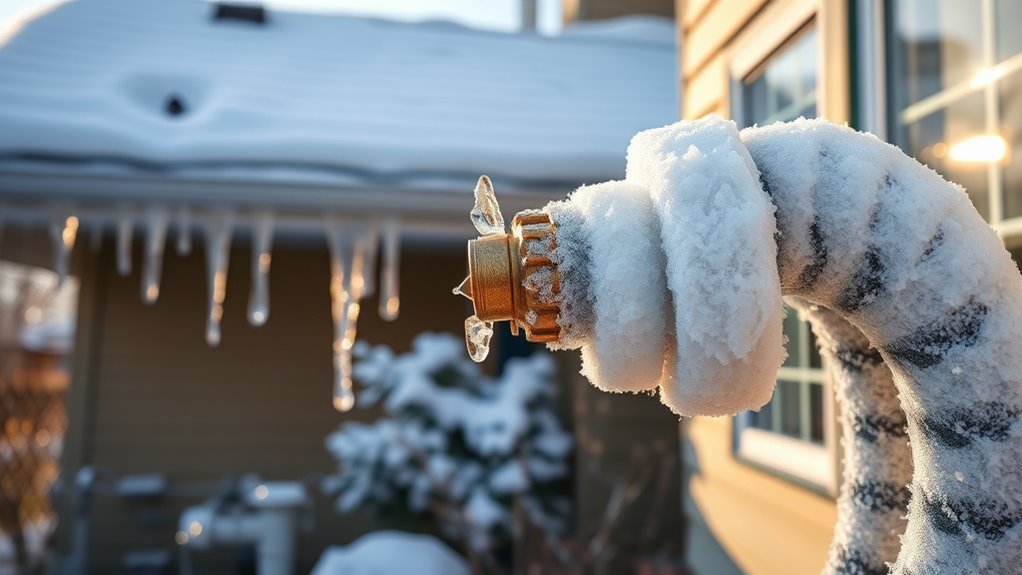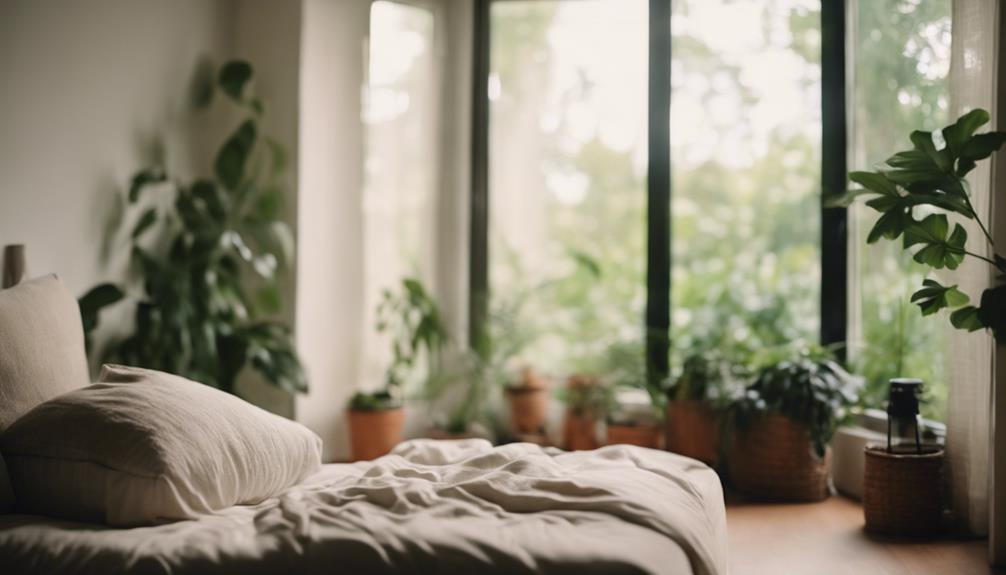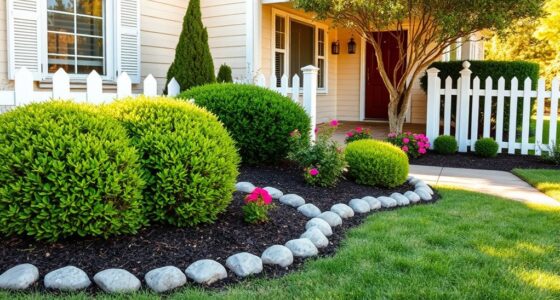To prevent frozen pipes this winter, insulate vulnerable pipes with foam sleeves and keep unheated areas warm. Install outdoor faucet covers and disconnect hoses to avoid trapped water freezing. Maintain your home’s temperature at least 55°F and let faucets drip slightly during very cold nights. Check insulation regularly for damage and make certain exterior protections stay secure. Following these steps helps safeguard your pipes; learn more tips to keep your plumbing safe all winter long.
Key Takeaways
- Insulate exposed pipes in unheated areas using foam sleeves or wrap insulation.
- Use outdoor faucet covers and disconnect hoses to prevent freezing.
- Maintain indoor temperatures at least 55°F and open cabinet doors under sinks for warmth.
- Let faucets drip slightly during extreme cold to keep water flowing.
- Regularly inspect and repair insulation and covers to ensure continuous protection.

As winter approaches, it is vital to take steps to prevent your pipes from freezing. Frozen pipes can burst, causing costly water damage and plumbing repairs. The key to avoiding this problem is to insulate your pipes properly and protect outdoor faucets. Start by installing pipe insulation around vulnerable pipes, especially those running through unheated areas like basements, attics, or garages. Pipe insulation acts as a barrier, keeping the cold air from directly contact the pipes and reducing the risk of freezing. You can find foam pipe sleeves or wrap insulation at most hardware stores, and it’s simple to install—just slip it over the pipe and secure it with tape or clips if needed. Be sure to cover all exposed sections, especially near exterior walls or in uninsulated spaces, where cold air can easily cause pipes to freeze.
In addition to pipe insulation, outdoor faucet covers are essential for protecting external water sources. These covers fit snugly over outdoor faucets and create a barrier against the cold air, preventing the faucet and the connected pipe from freezing. Many outdoor faucet covers are made of foam or insulated material and are easy to install—just slip them over the faucet and close any securing straps. For added protection, consider draining any water remaining in outdoor hoses and disconnecting hoses altogether, as trapped water can freeze, expand, and cause the faucet or pipe to burst.
Another effective step is to keep your home heated adequately, especially during extremely cold nights. Set your thermostat to at least 55°F (13°C) if you’re away or asleep, to maintain a steady temperature in unheated spaces. Opening cabinet doors under sinks in cold areas allows warmer air to circulate around pipes, reducing the chance of freezing. If you’re going to be away for an extended period, consider letting your faucets drip slightly; running water helps prevent freezing by keeping the water moving. Additionally, understanding personal home maintenance tips can help you identify potential problem areas before cold weather hits.
Finally, regularly check your outdoor faucet covers and insulation throughout the winter season. If you notice any damage or wear, replace or repair them promptly. Taking these simple measures ensures your pipes stay warm and functional during the cold months, saving you from the inconvenience and expense of dealing with burst pipes. By proactively insulating your pipes and protecting outdoor faucets, you create a barrier against winter’s chill and safeguard your home’s plumbing system.
Frequently Asked Questions
How Can I Tell if My Pipes Are Already Frozen?
You can tell if your pipes are already frozen by feeling for cold spots along exposed pipes or noticing a lack of water flow during water flow testing. If a section feels markedly colder than the rest, it’s likely frozen. Check for frost or a buildup of ice on the pipe surface. To prevent further issues, ensure proper pipe insulation and conduct water flow testing regularly during cold snaps.
What Materials Work Best for Insulating Pipes?
When it comes to insulating pipes, your best bet is to use high-quality pipe insulation made from foam or fiberglass. These insulating materials are effective at keeping pipes warm and preventing freezing. Foam pipe insulation is especially easy to install and offers excellent thermal protection. Don’t forget to wrap all exposed pipes, particularly those in unheated areas, with these materials to guarantee they stay warm and functional during cold months.
Can I Thaw Frozen Pipes Myself Safely?
Yes, you can thaw frozen pipes yourself safely. Start by turning on the tap to relieve pressure, then gently apply heat using a hairdryer or heating pad, working from the faucet toward the frozen section. Avoid open flames. Use pipe insulation or heating cables for ongoing prevention. Heating cables are especially effective for stubborn ice. Always monitor the process and call a professional if you’re unsure or if pipes are severely frozen.
How Do I Prevent Frozen Pipes in an Unheated Garage?
Think of your garage as a fortress against winter’s bite. To prevent frozen pipes, insulate your garage with proper garage insulation, creating a warm barrier. Use pipe heating cables along vulnerable pipes—they act like a cozy blanket, keeping water flowing. Keep doors closed, and consider running a slight trickle of water during extremely cold nights. These steps make your garage a winter-proof sanctuary, protecting your pipes from freezing.
Are There Specific Precautions for Outdoor Faucets?
Yes, you should take precautions with outdoor faucets. Install outdoor faucet covers to insulate them from cold temperatures. Consider replacing standard faucets with frost-proof spigots, which are designed to prevent freezing by allowing water to drain away from the exterior. Additionally, disconnect hoses and drain any remaining water to avoid pressure buildup and potential damage during freezing temperatures. These steps help protect your outdoor plumbing from winter damage effectively.
Conclusion
So, while you diligently insulate, keep your faucets dripping, and seal those leaks, it’s funny how the only thing you might forget is that winter’s unpredictability can still surprise you. Ironically, the very precautions you take often prevent those disastrous bursts—yet it’s the one night you skip a step that your pipes decide to freeze. Stay vigilant, because in winter, a little preparation can save you from a big, icy mess.










